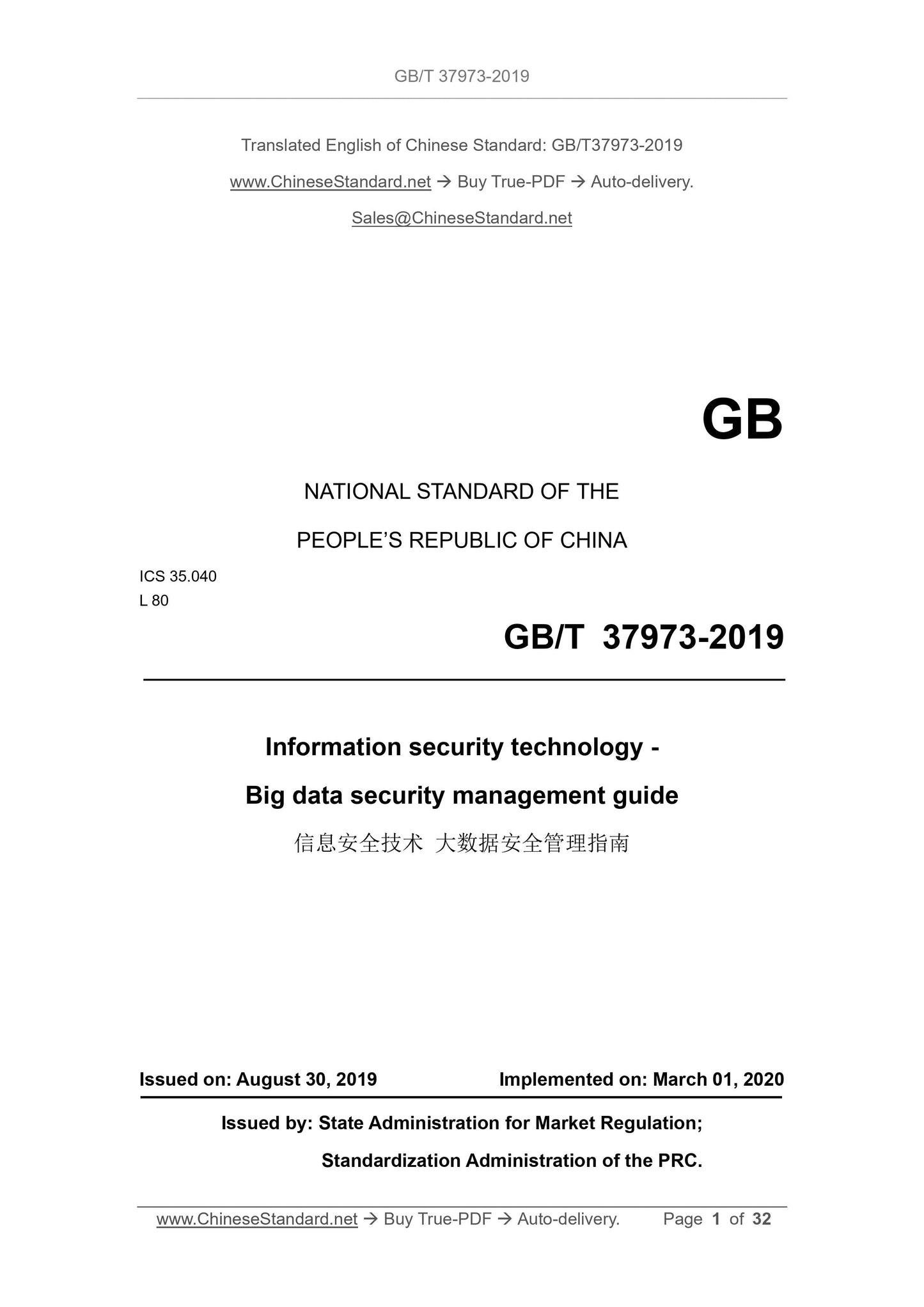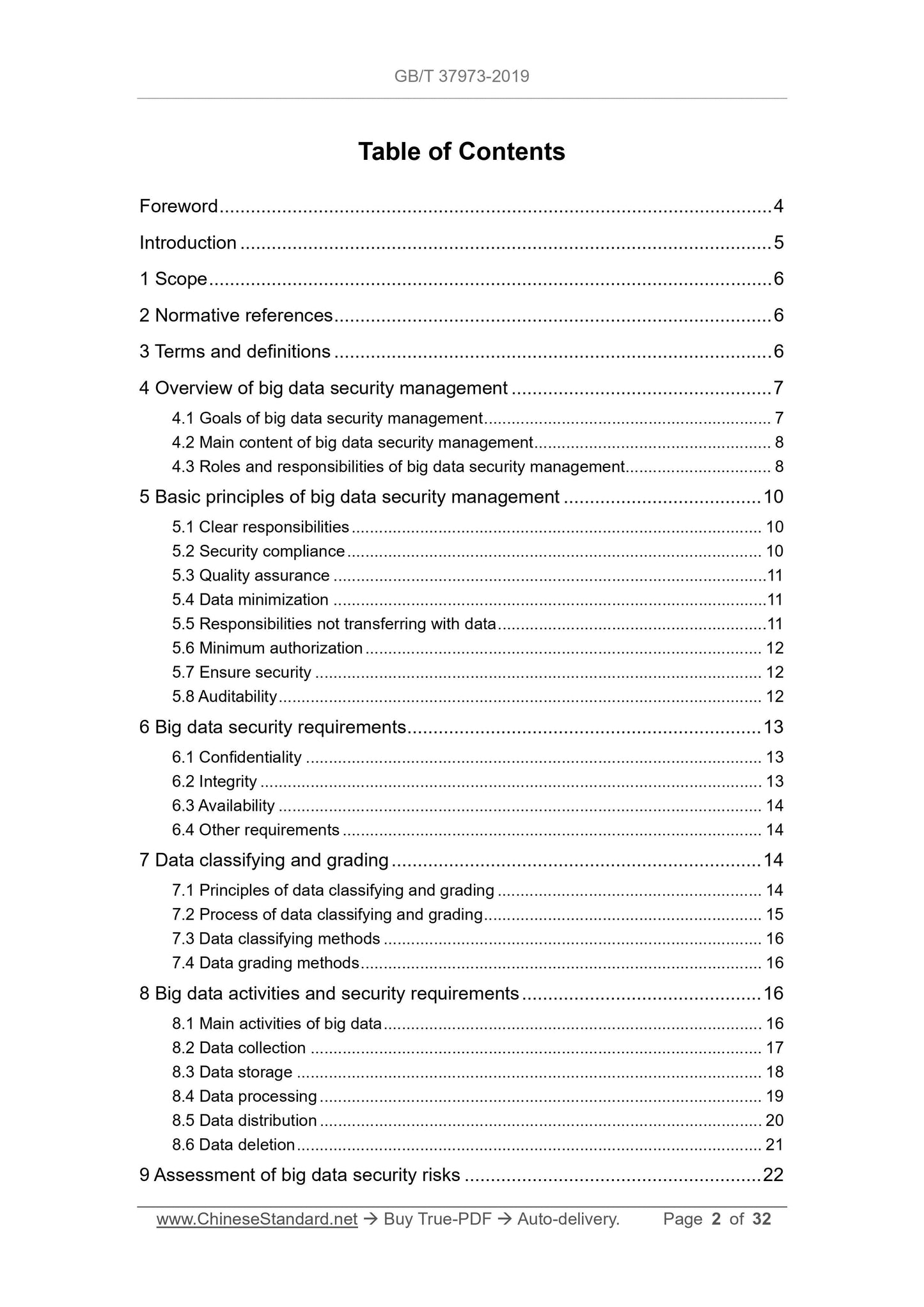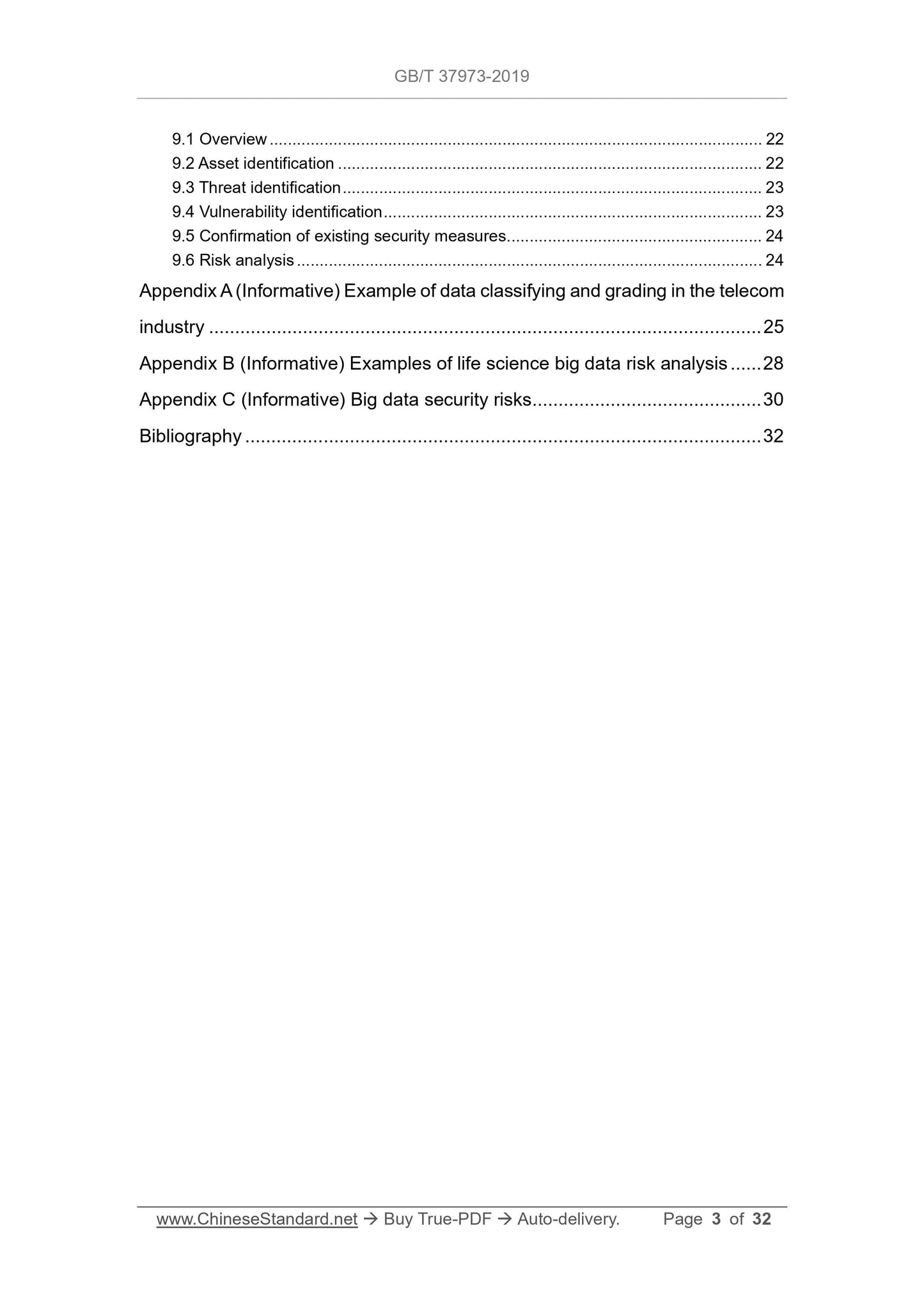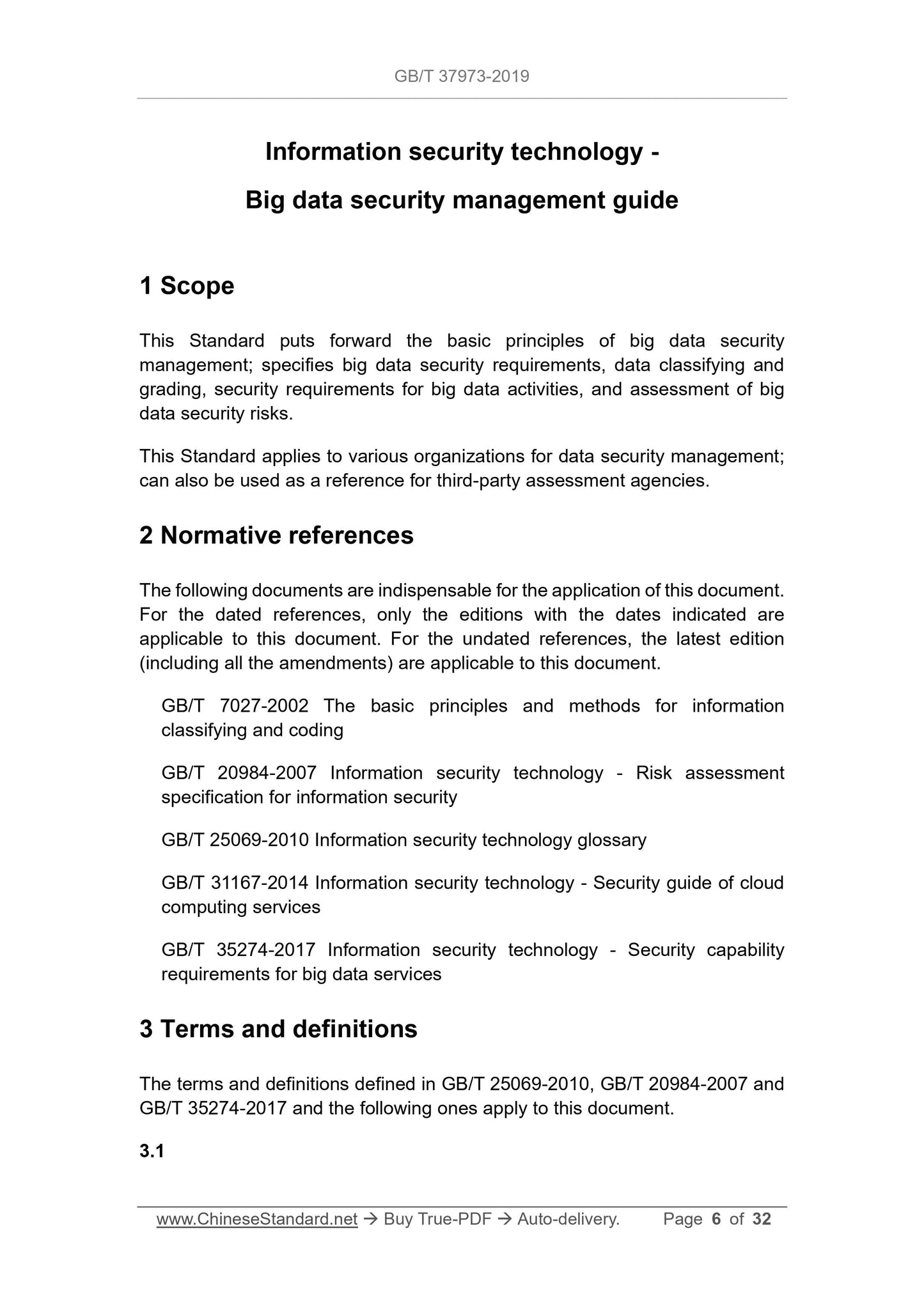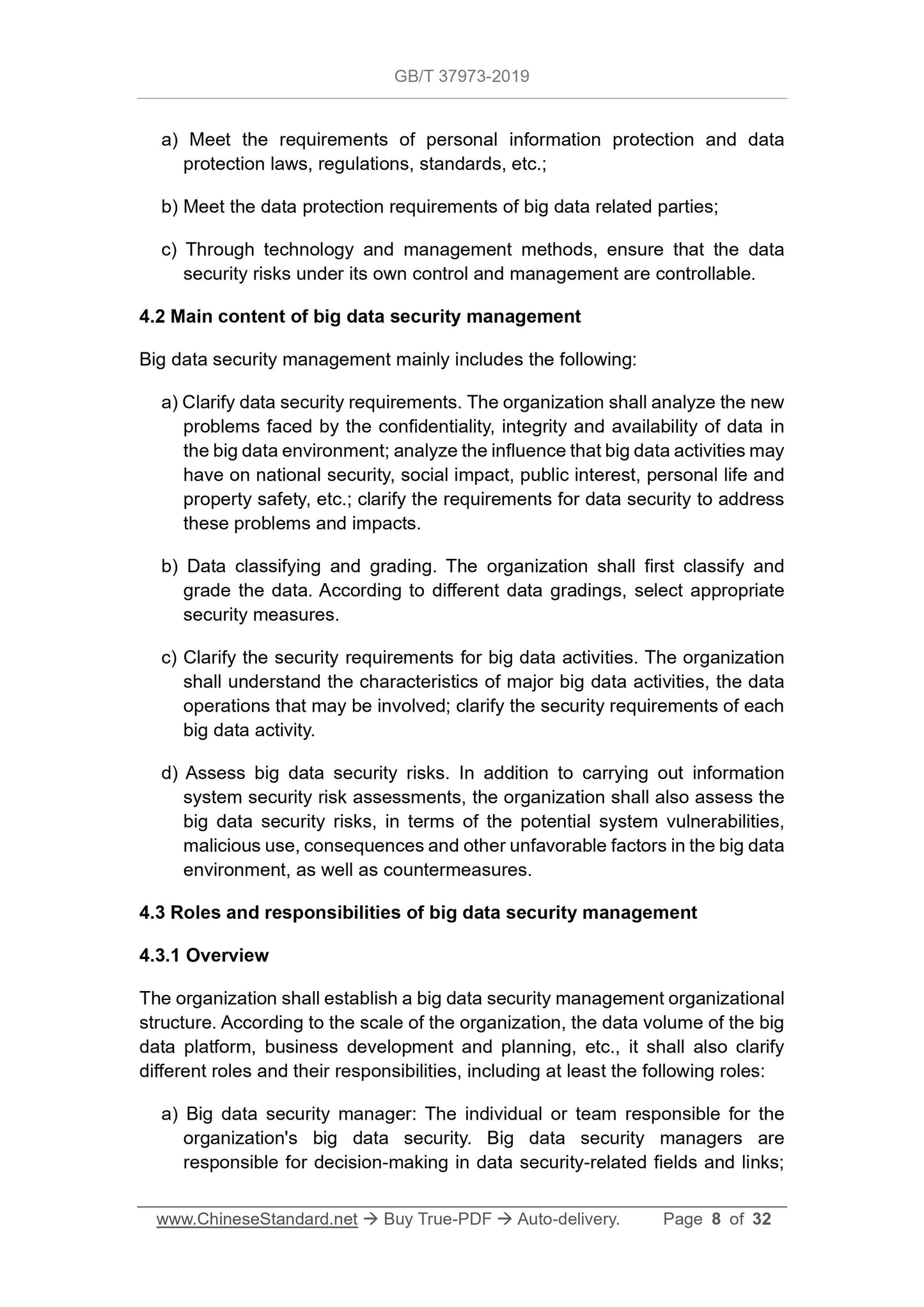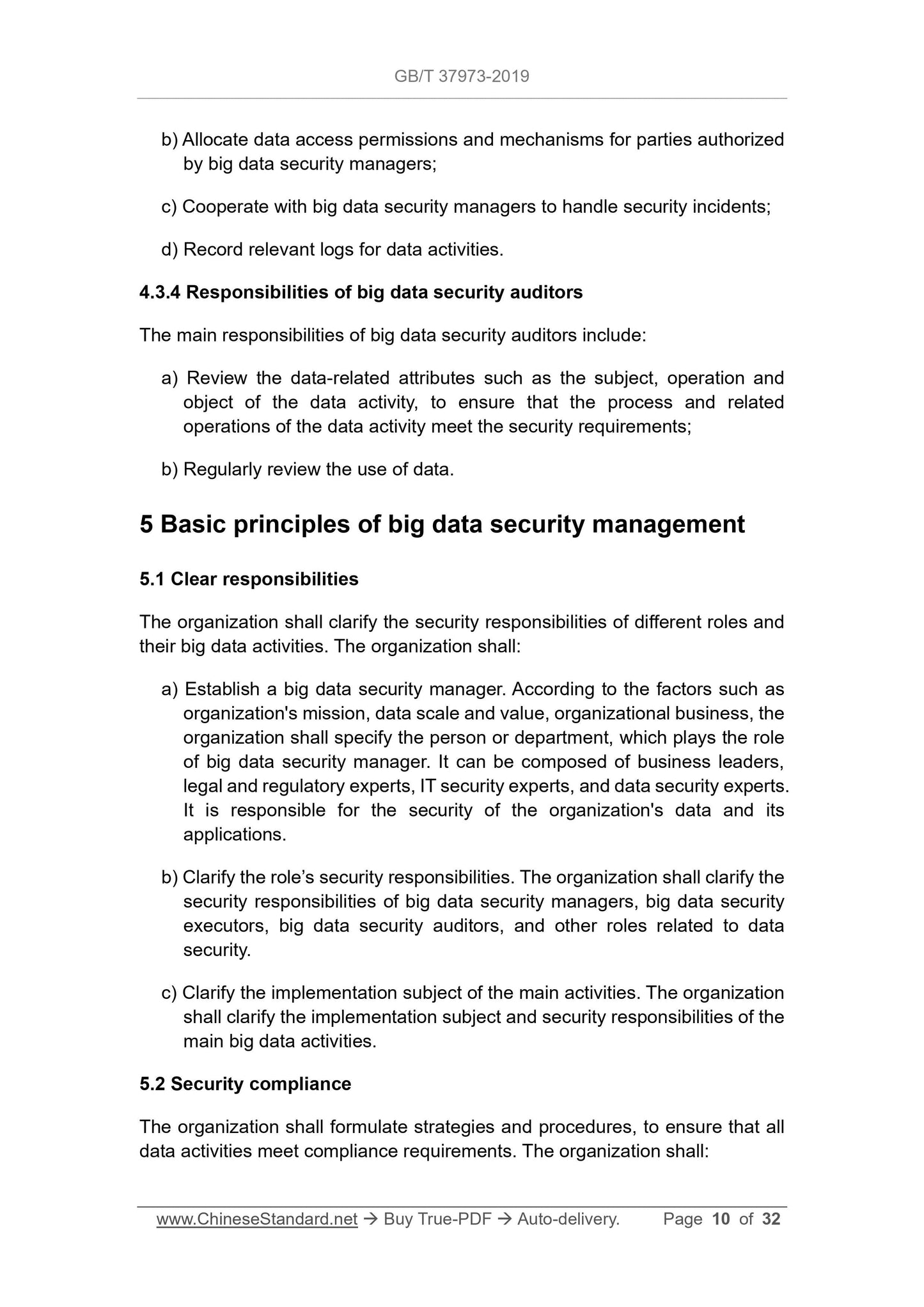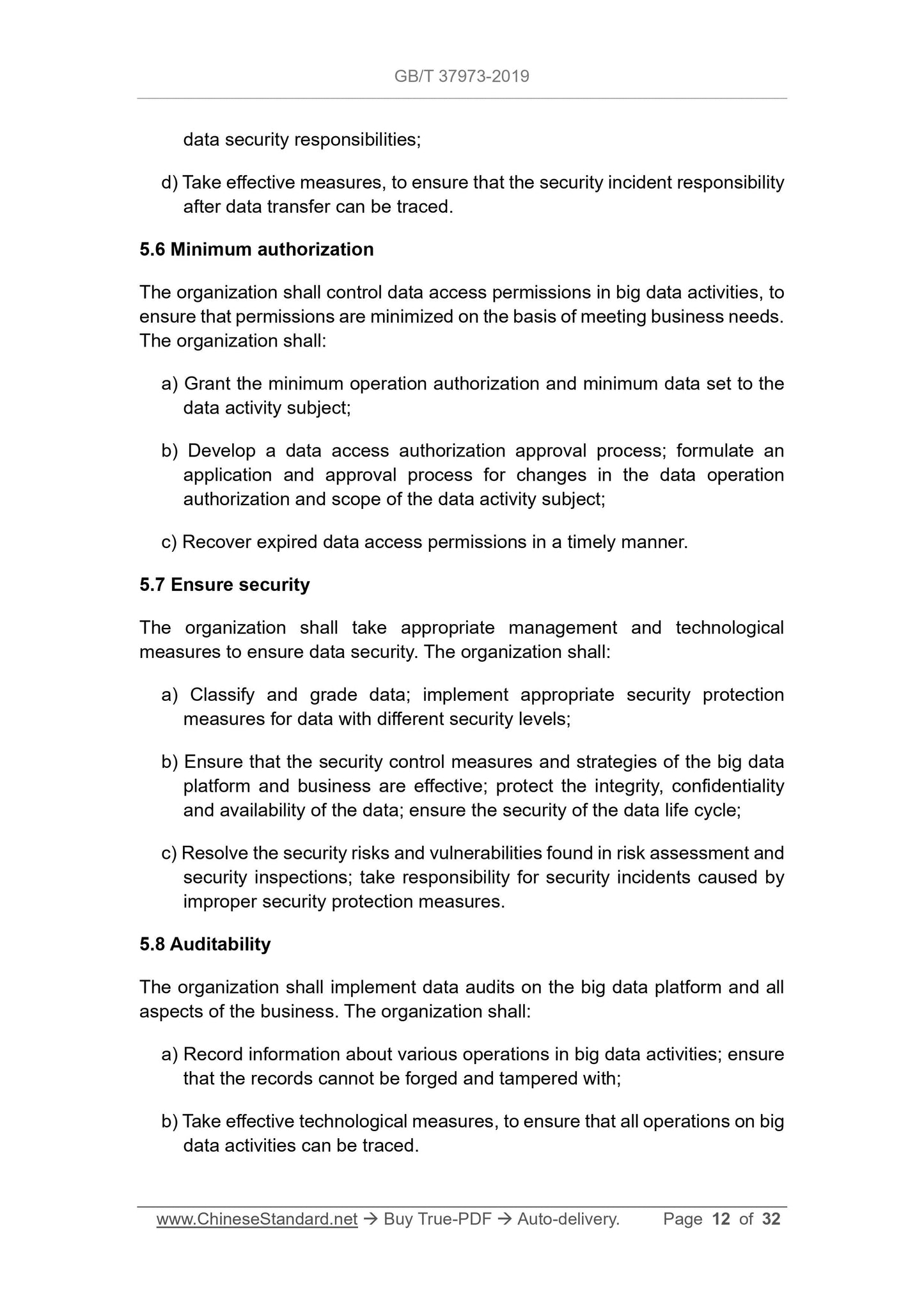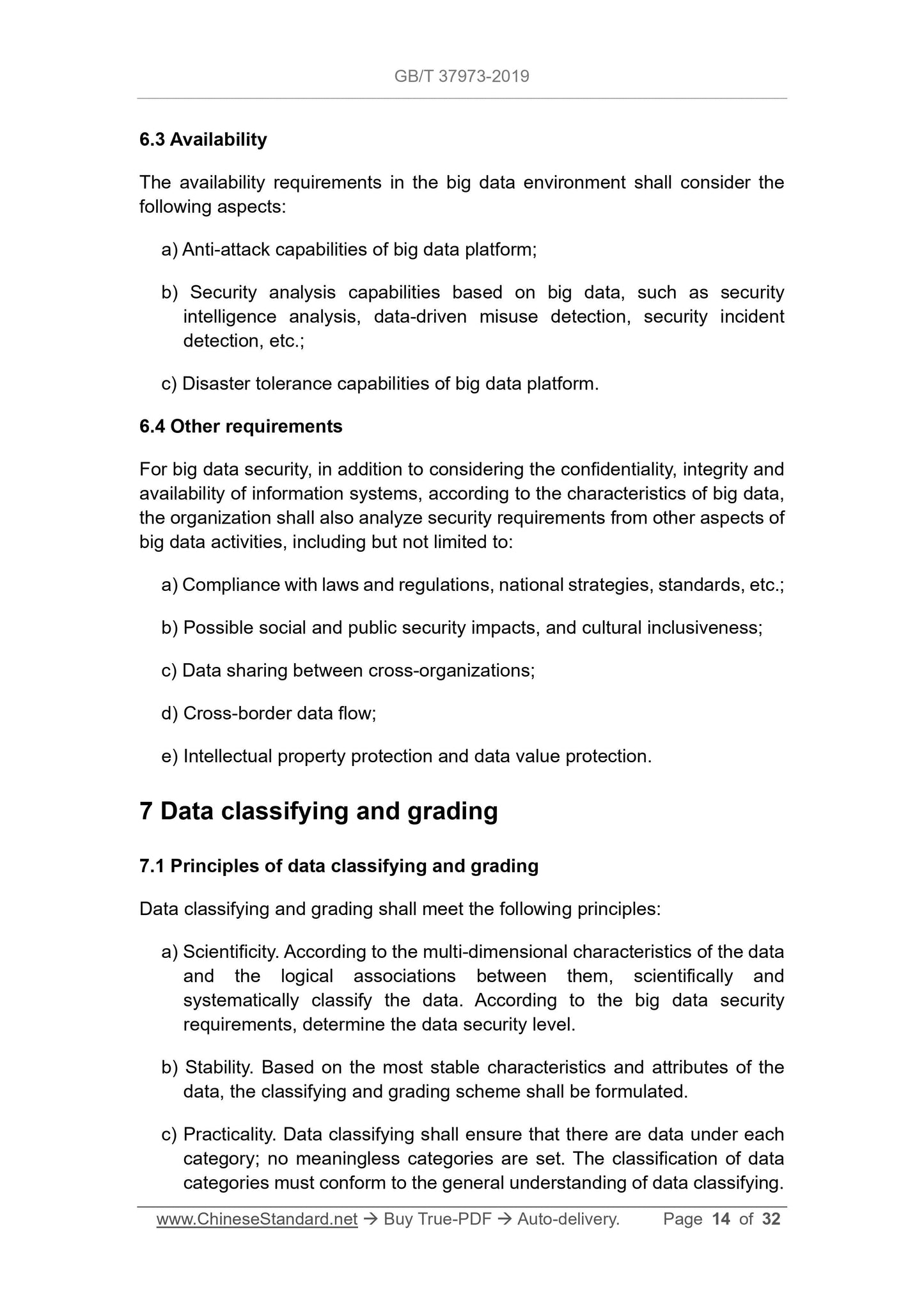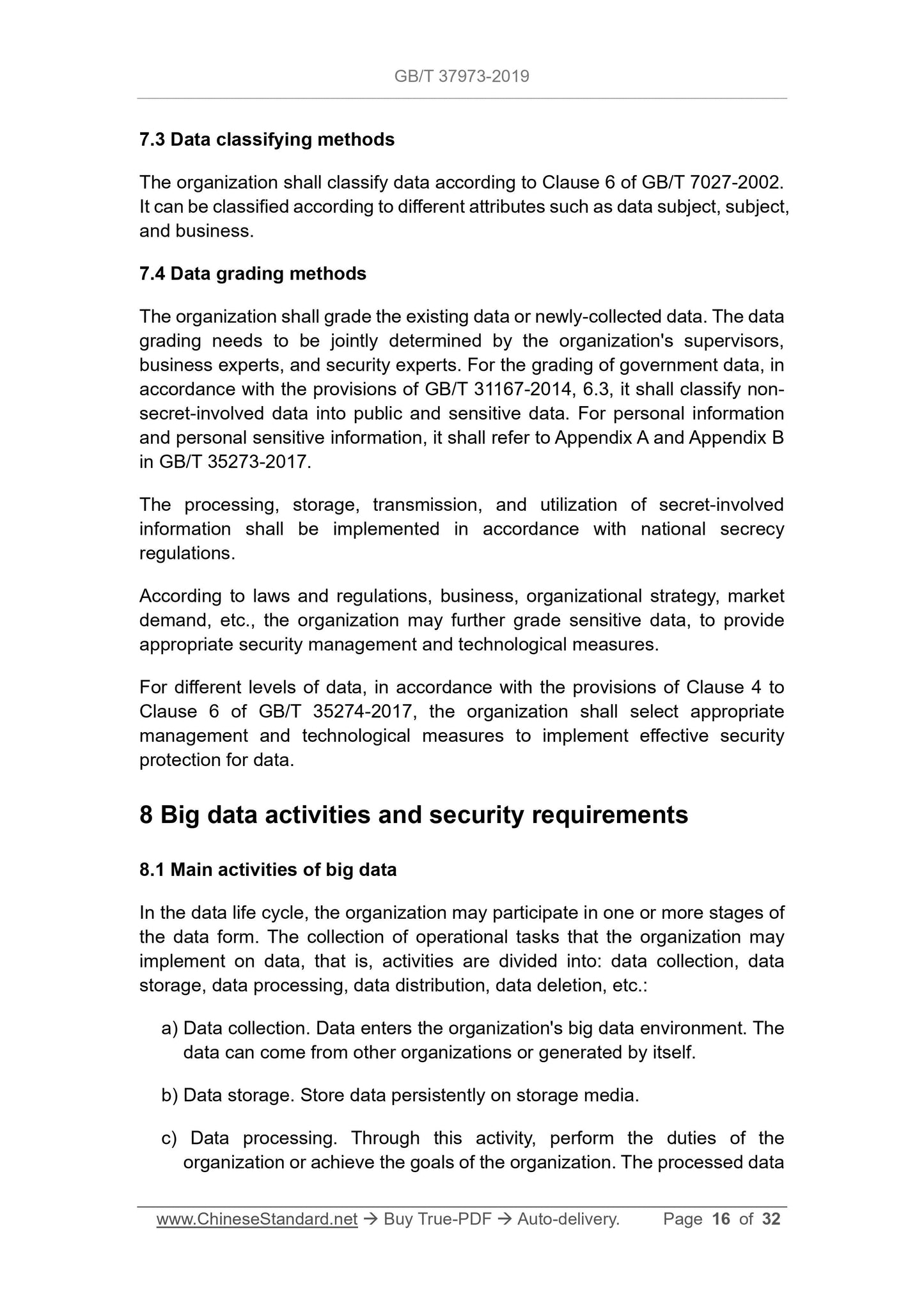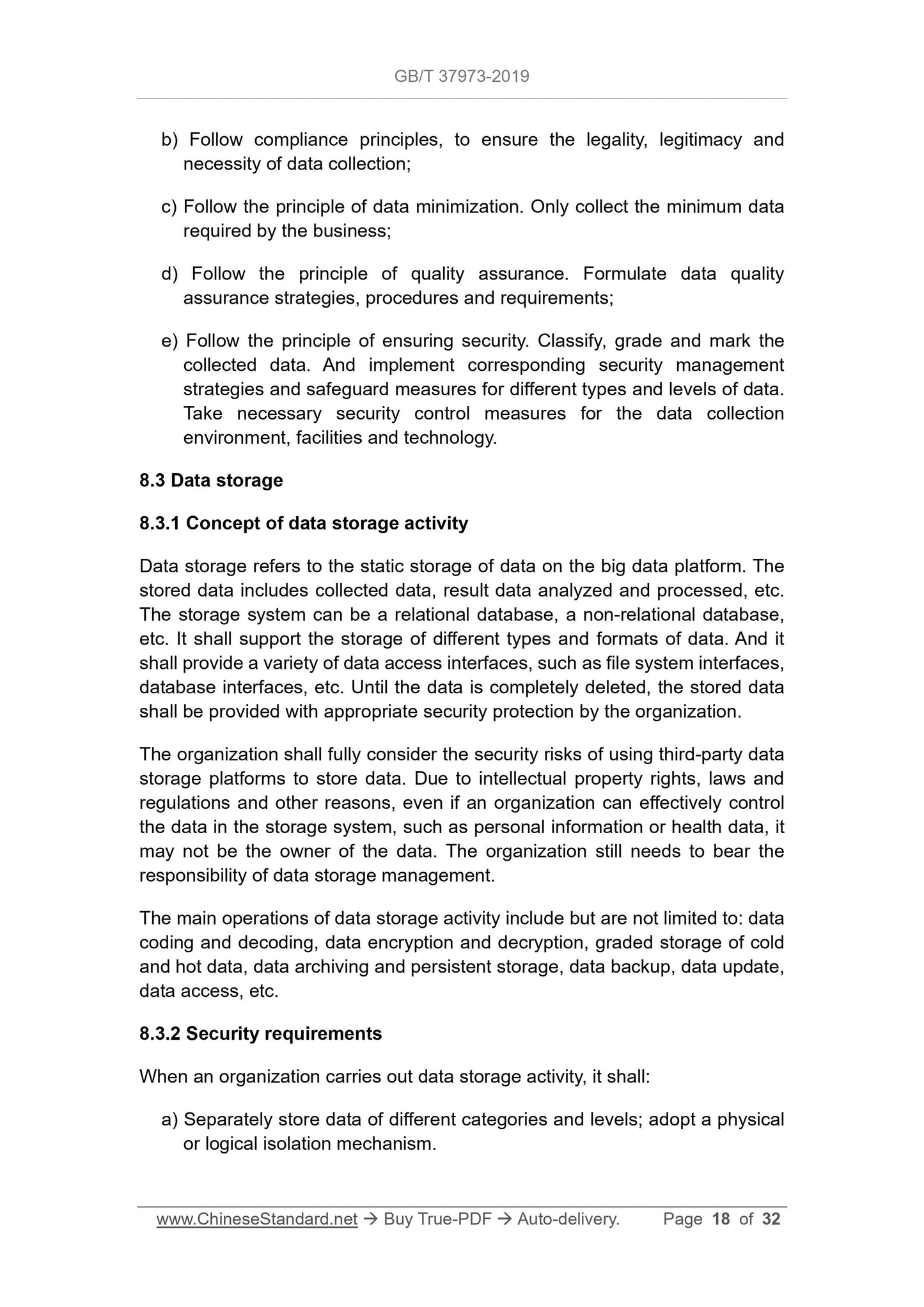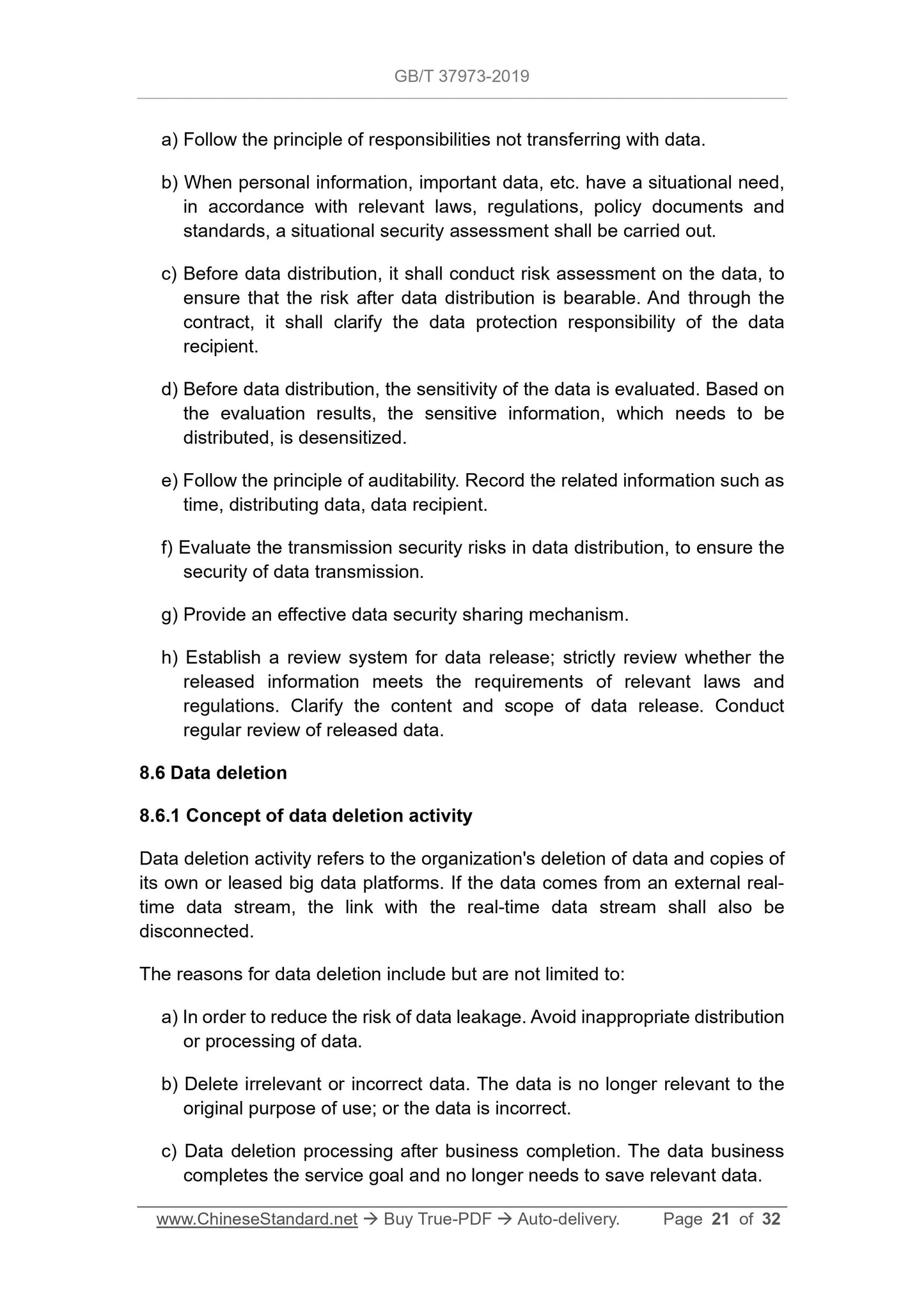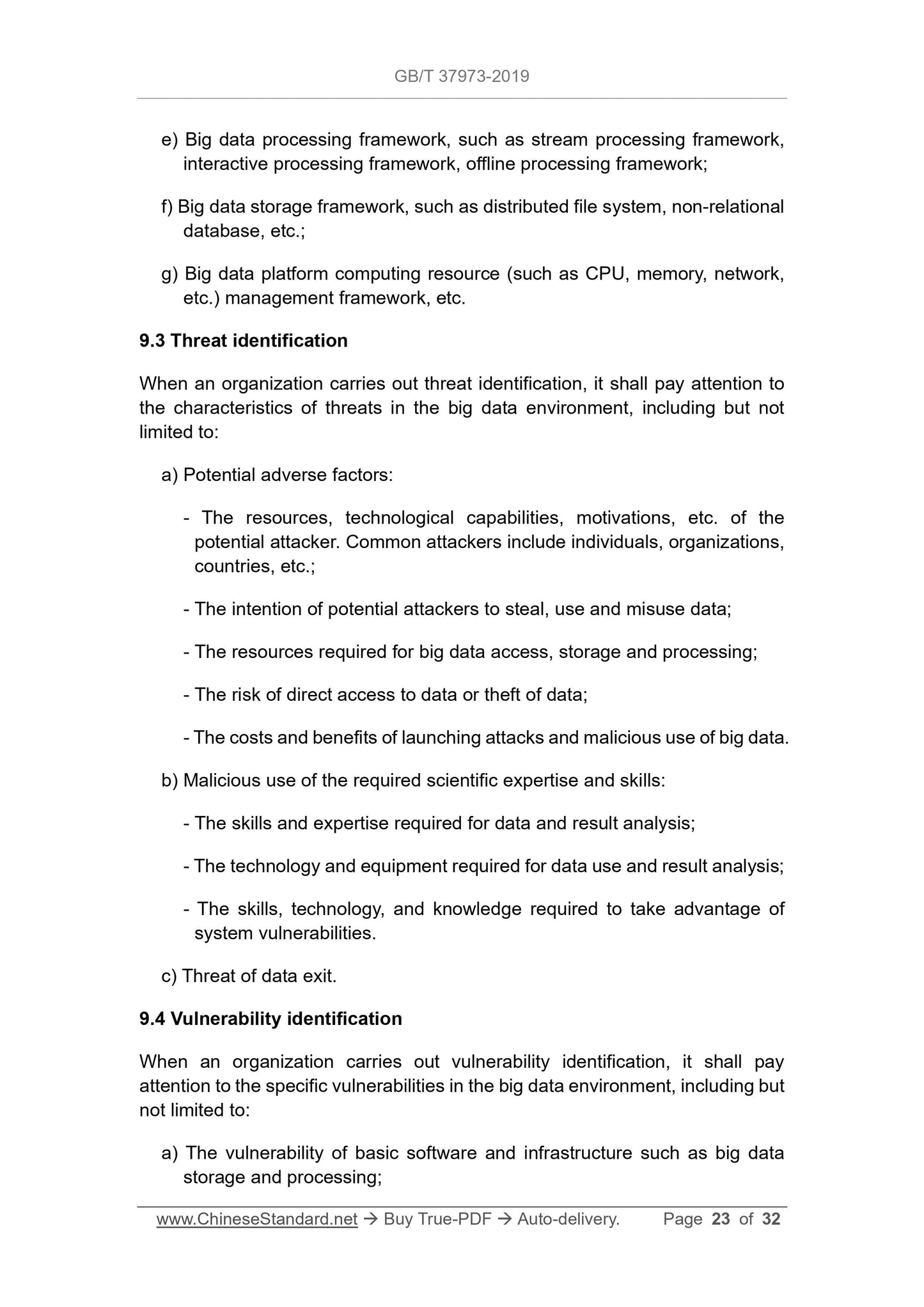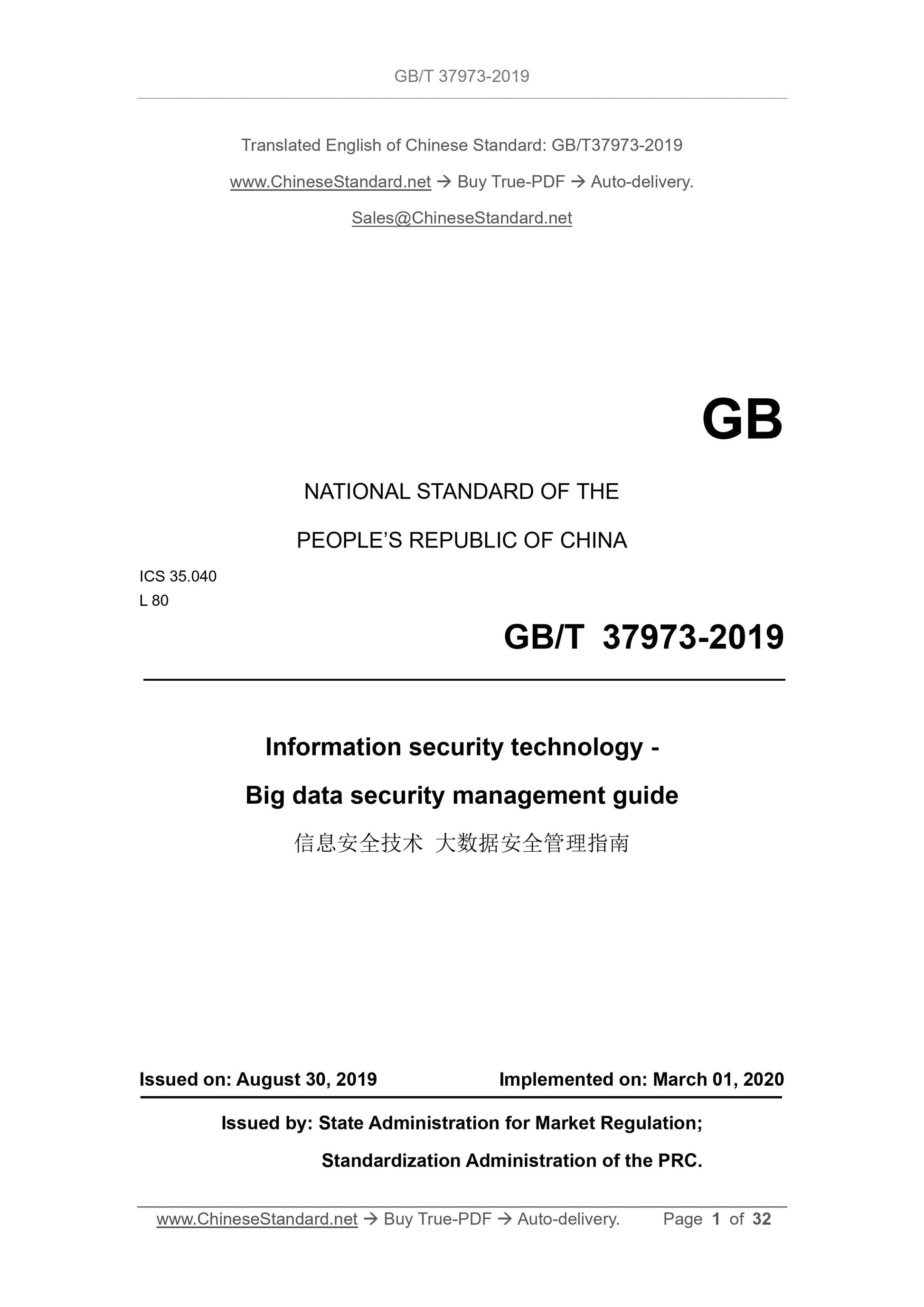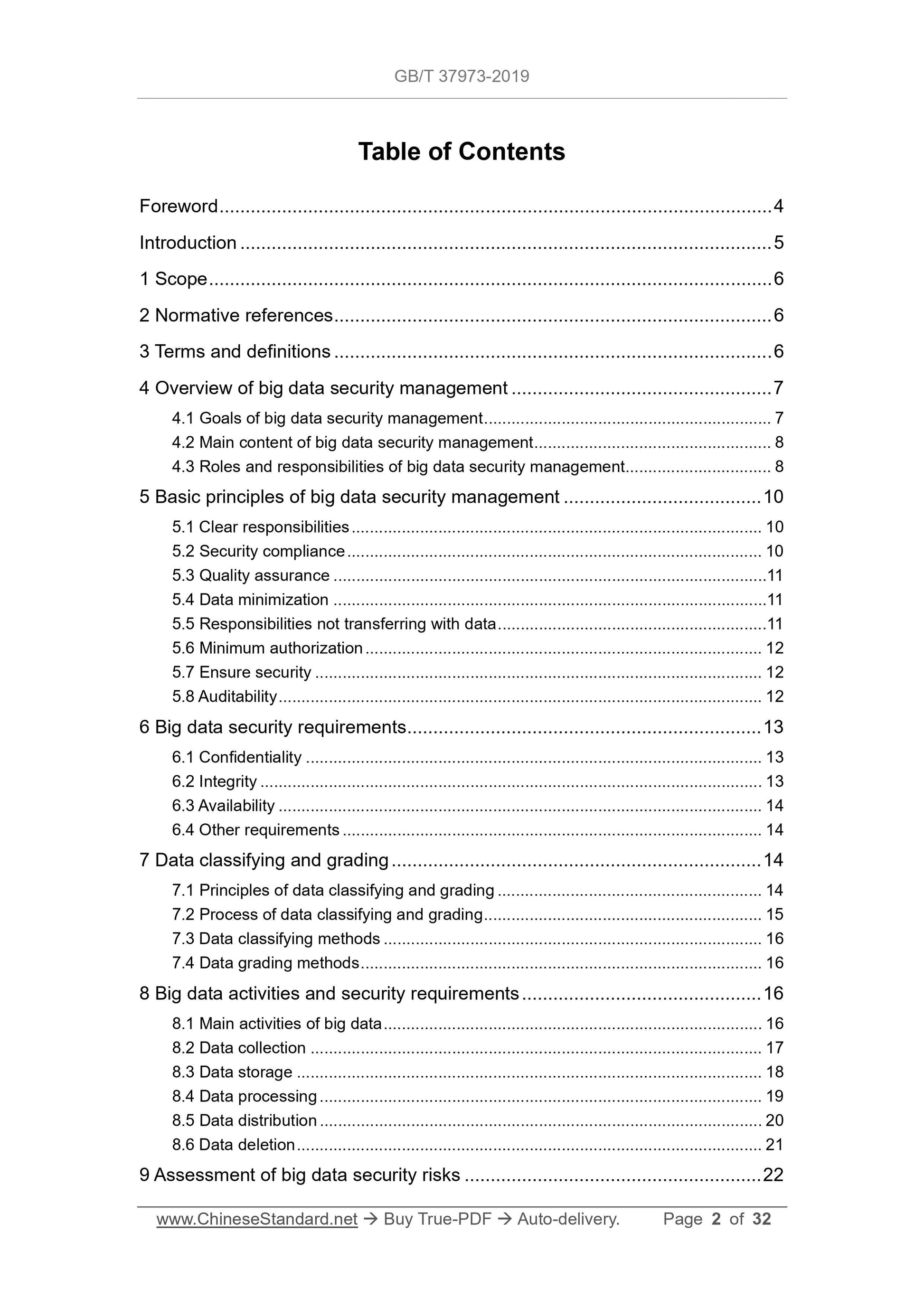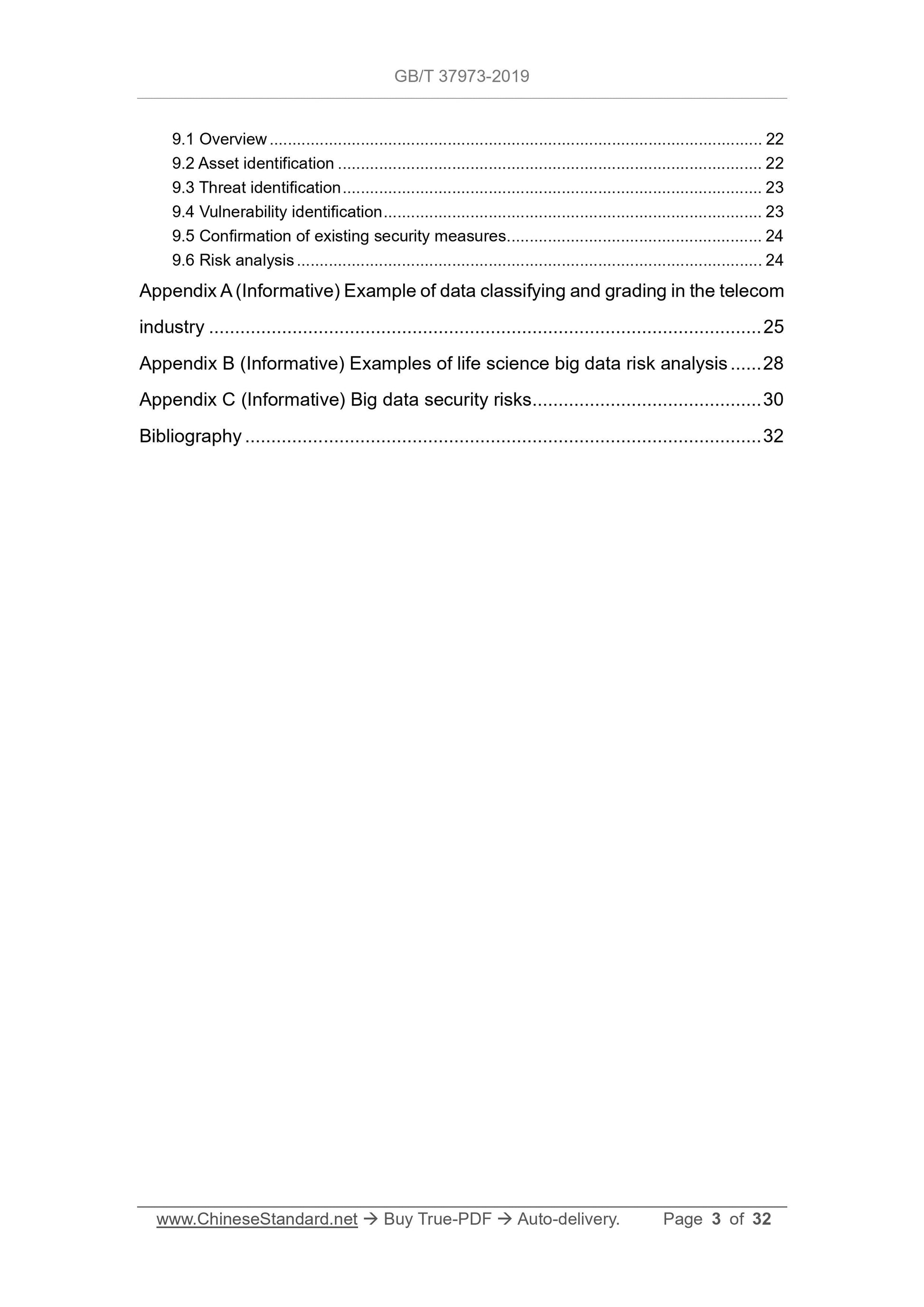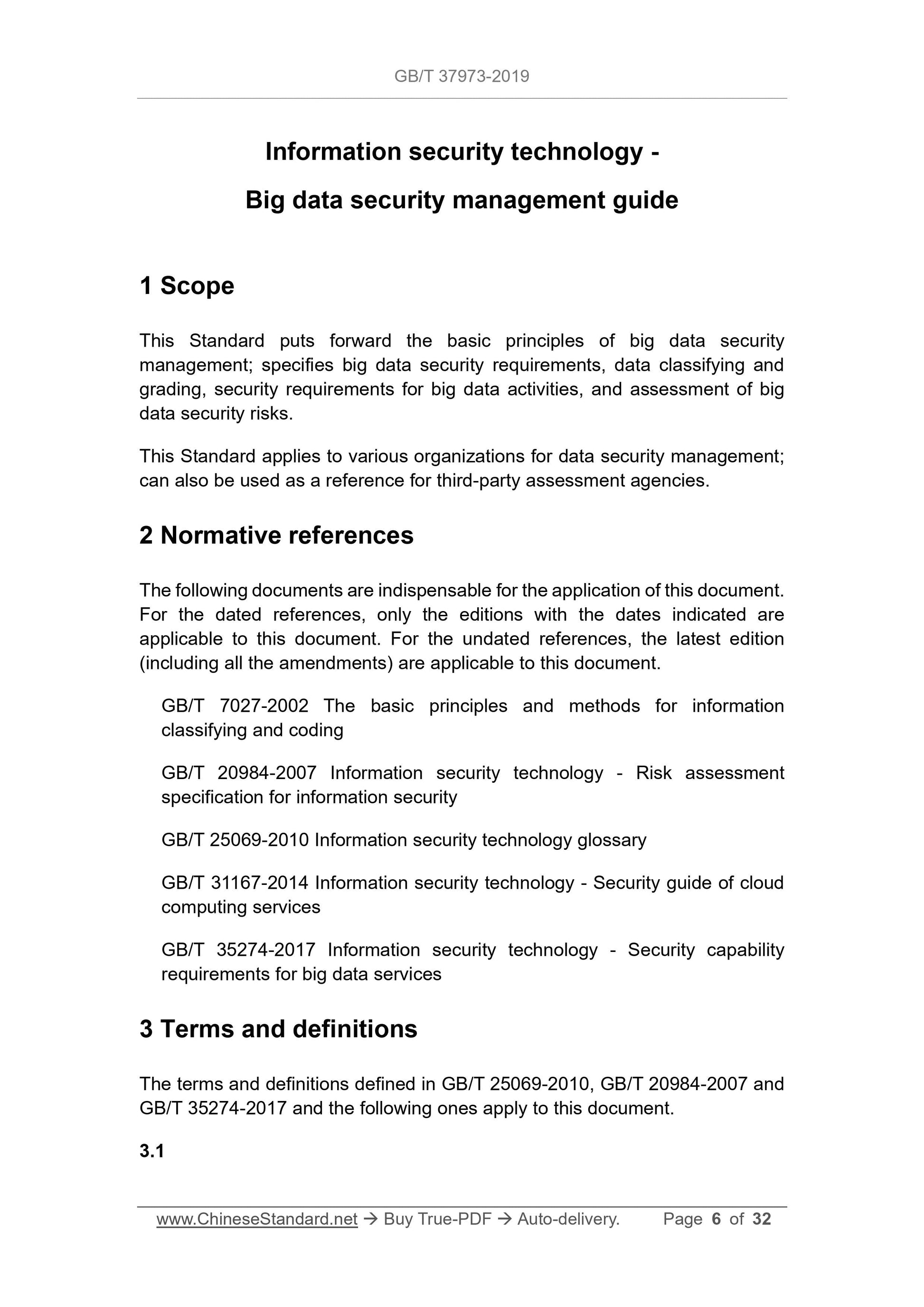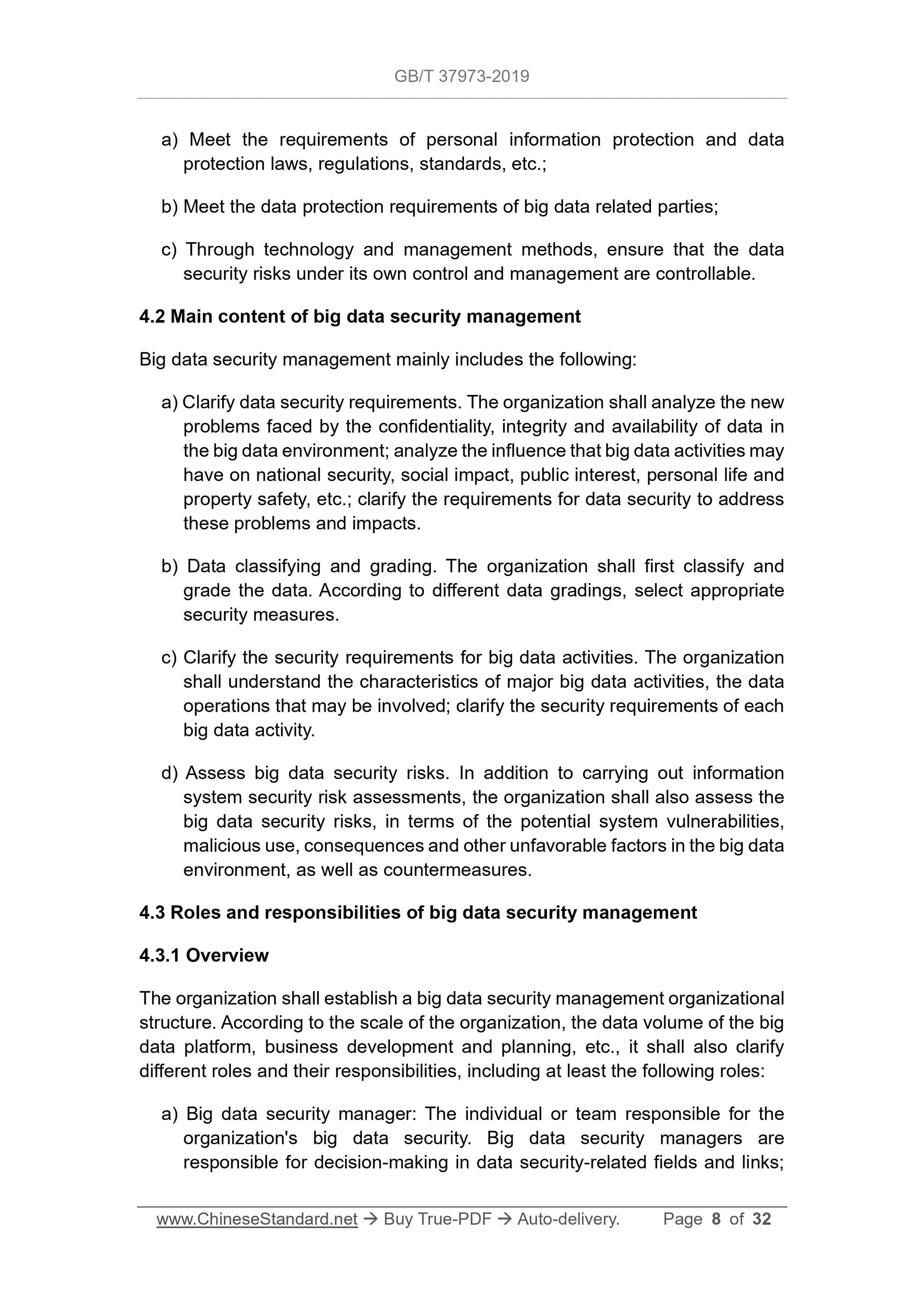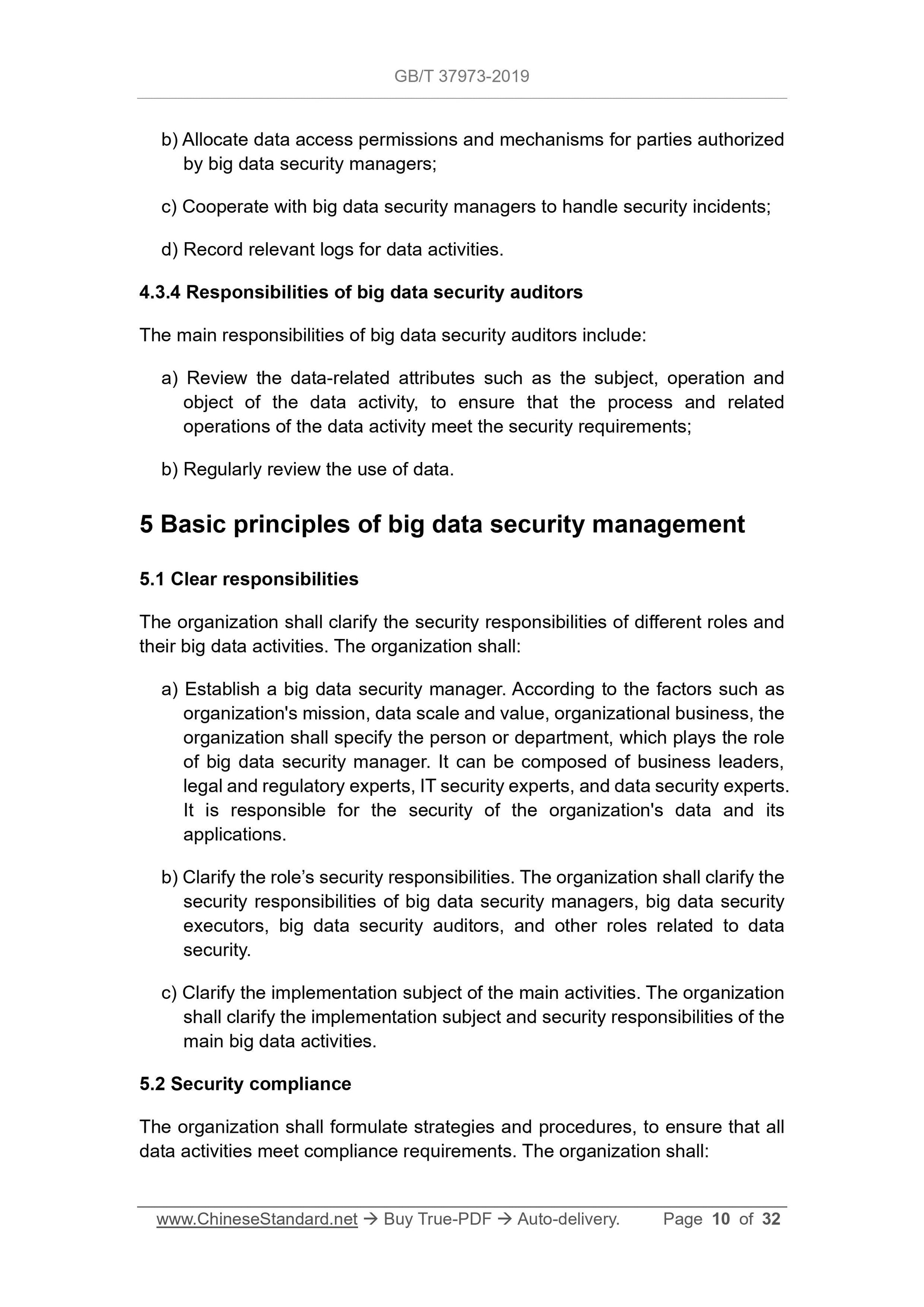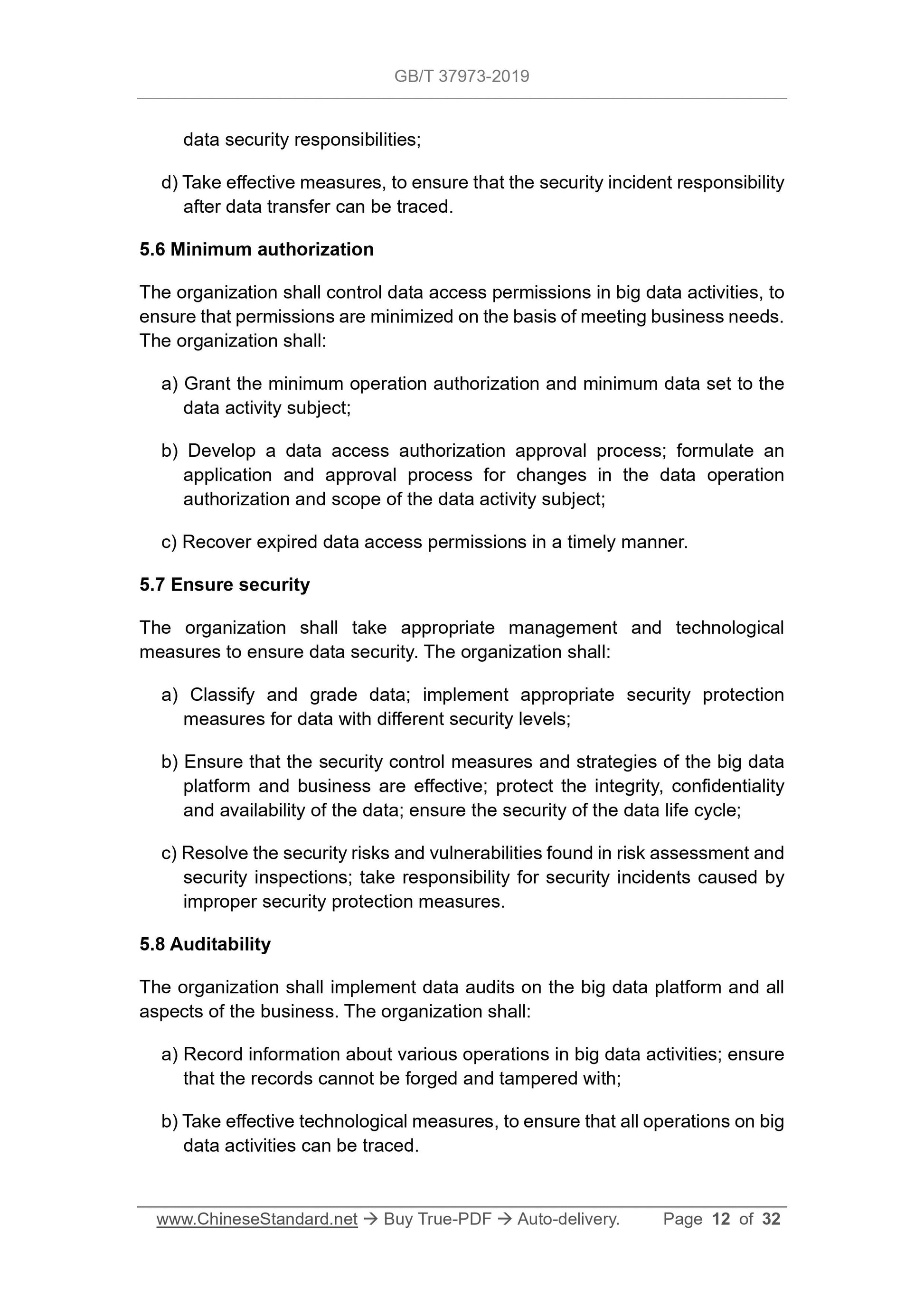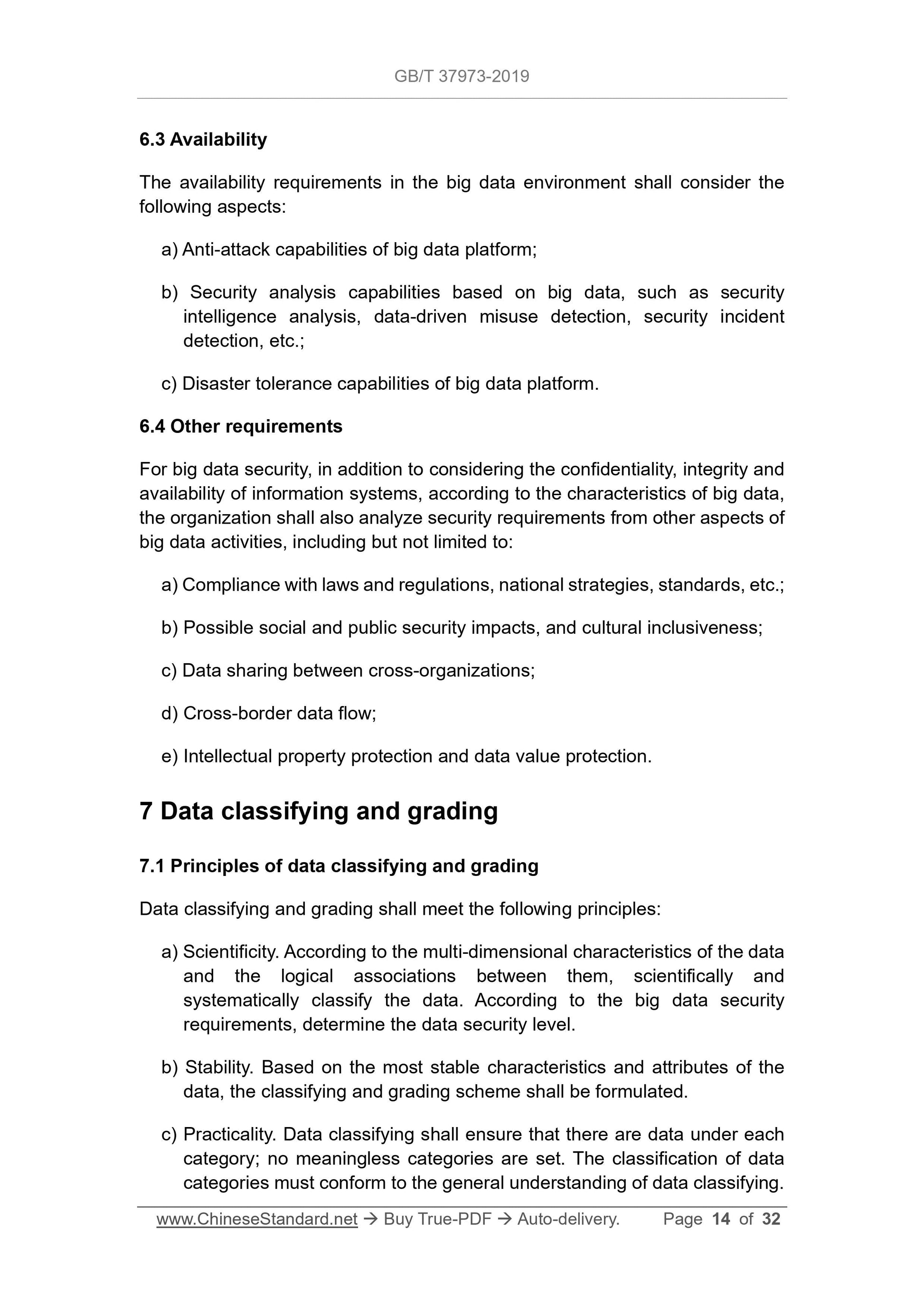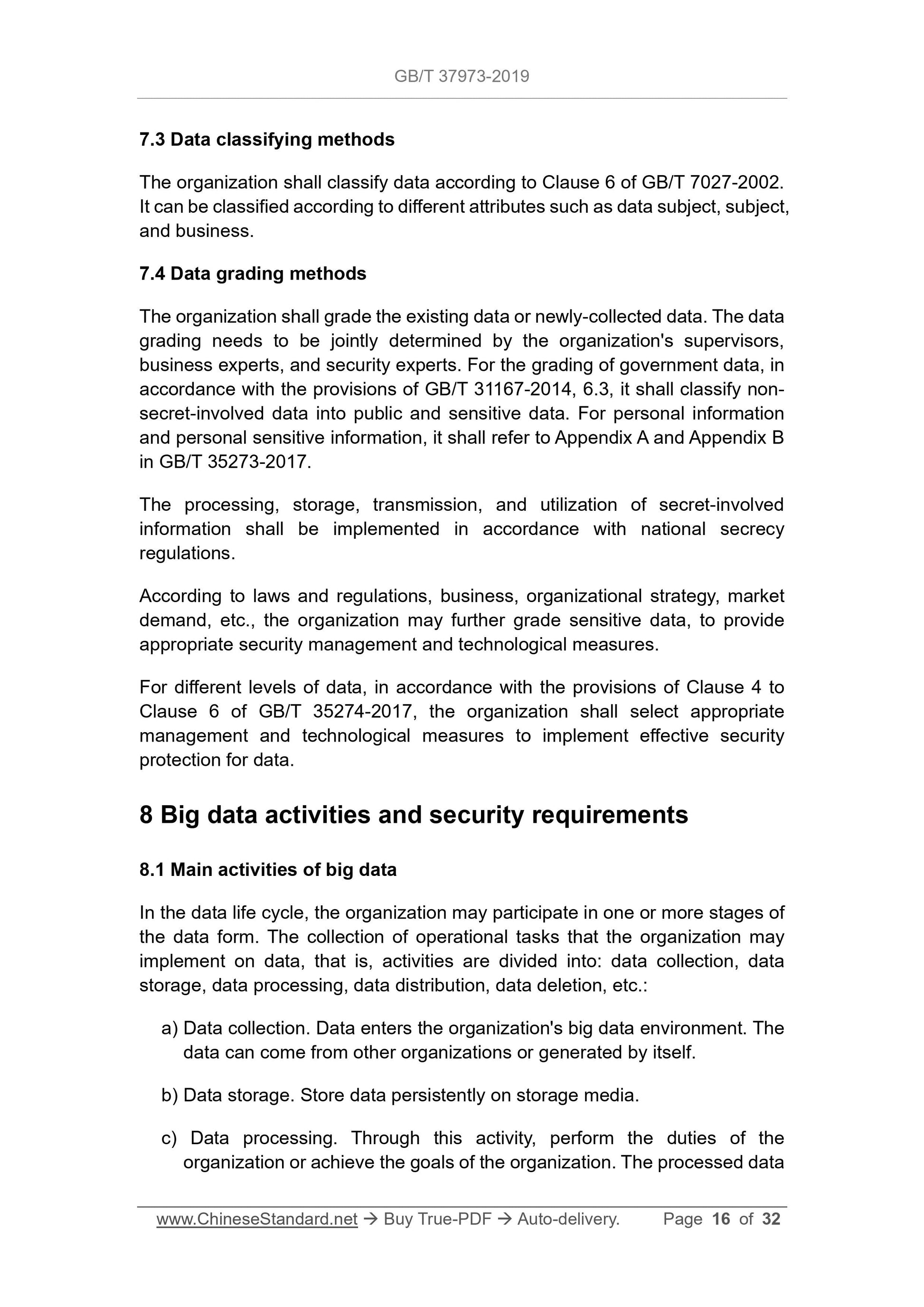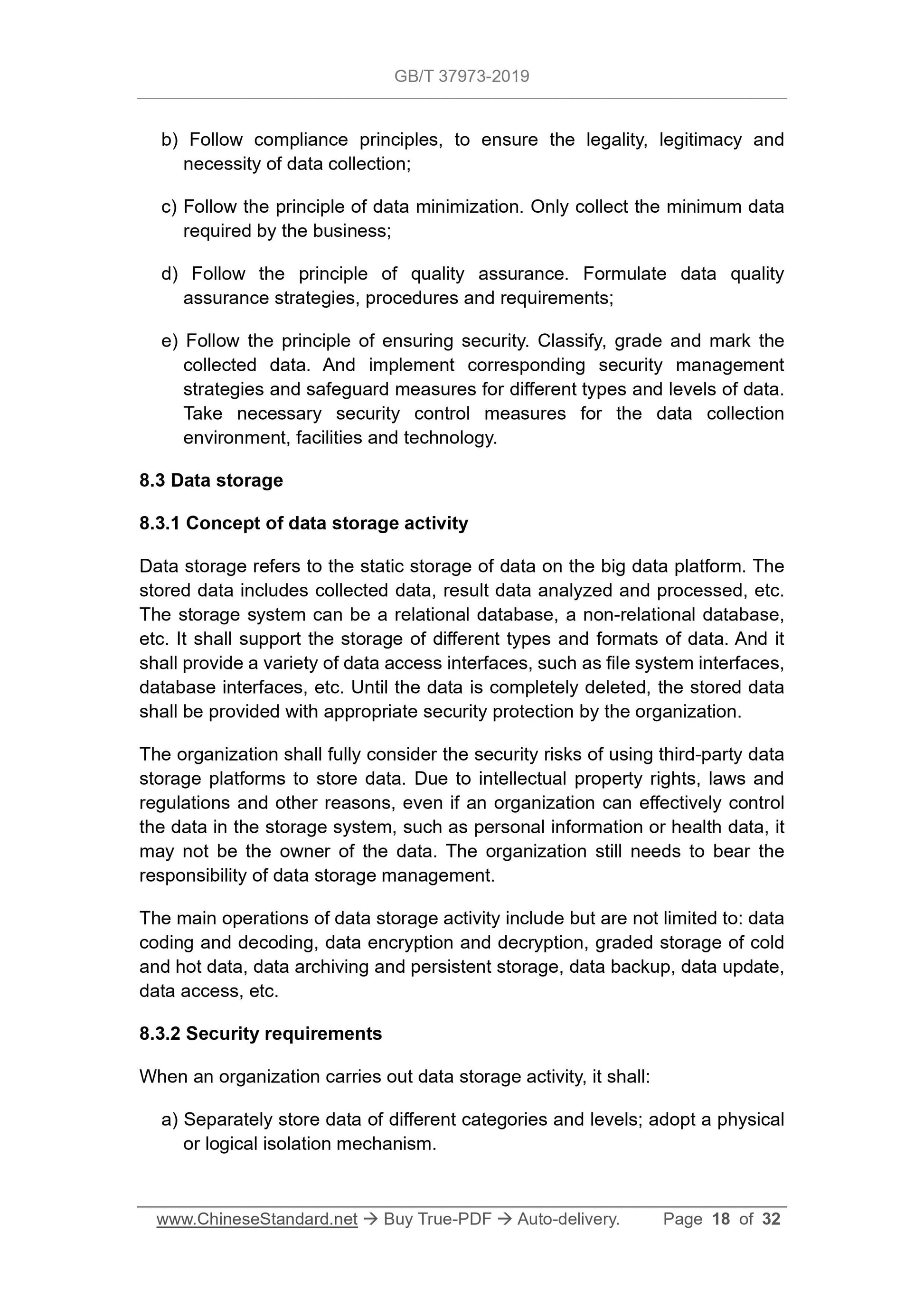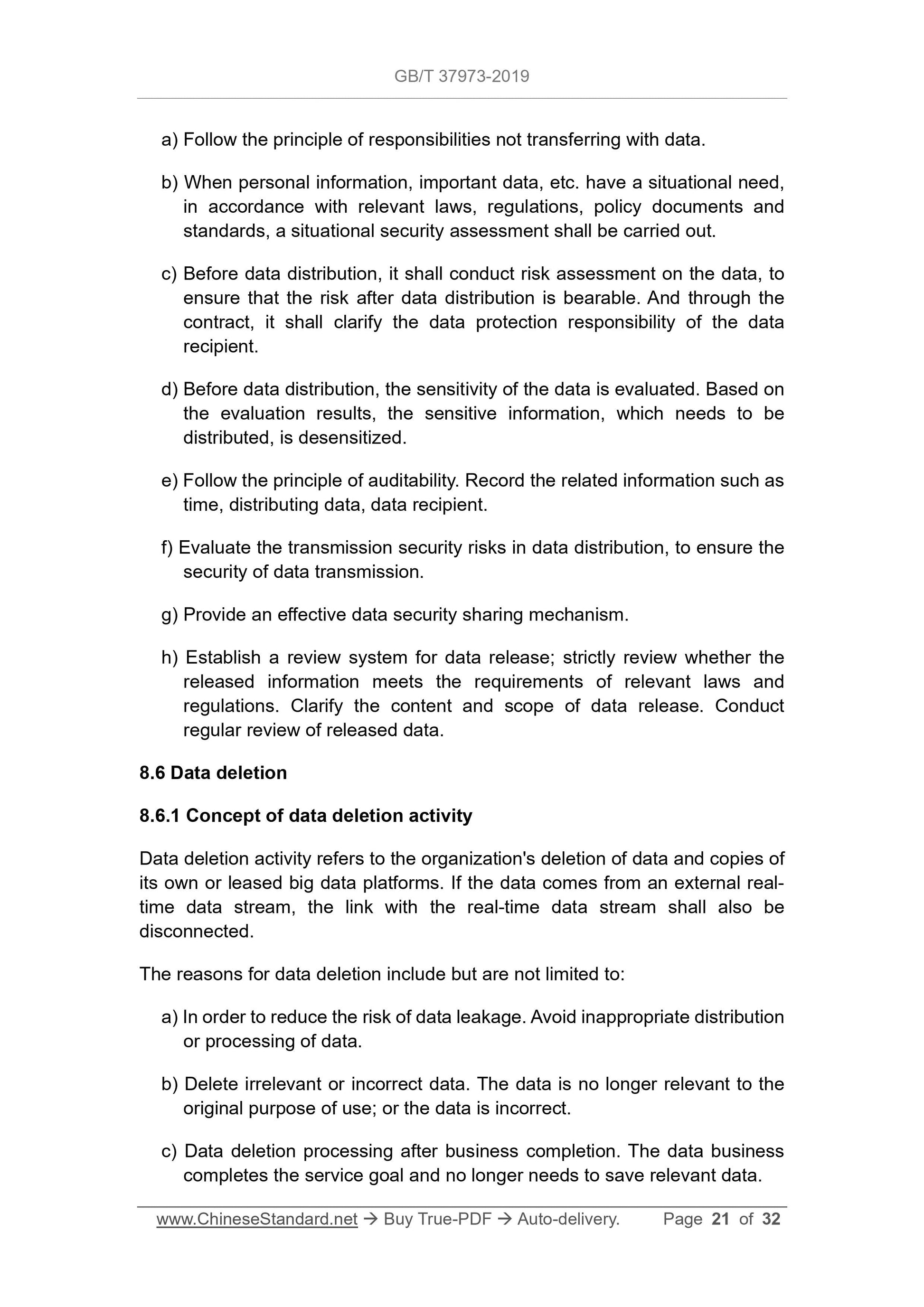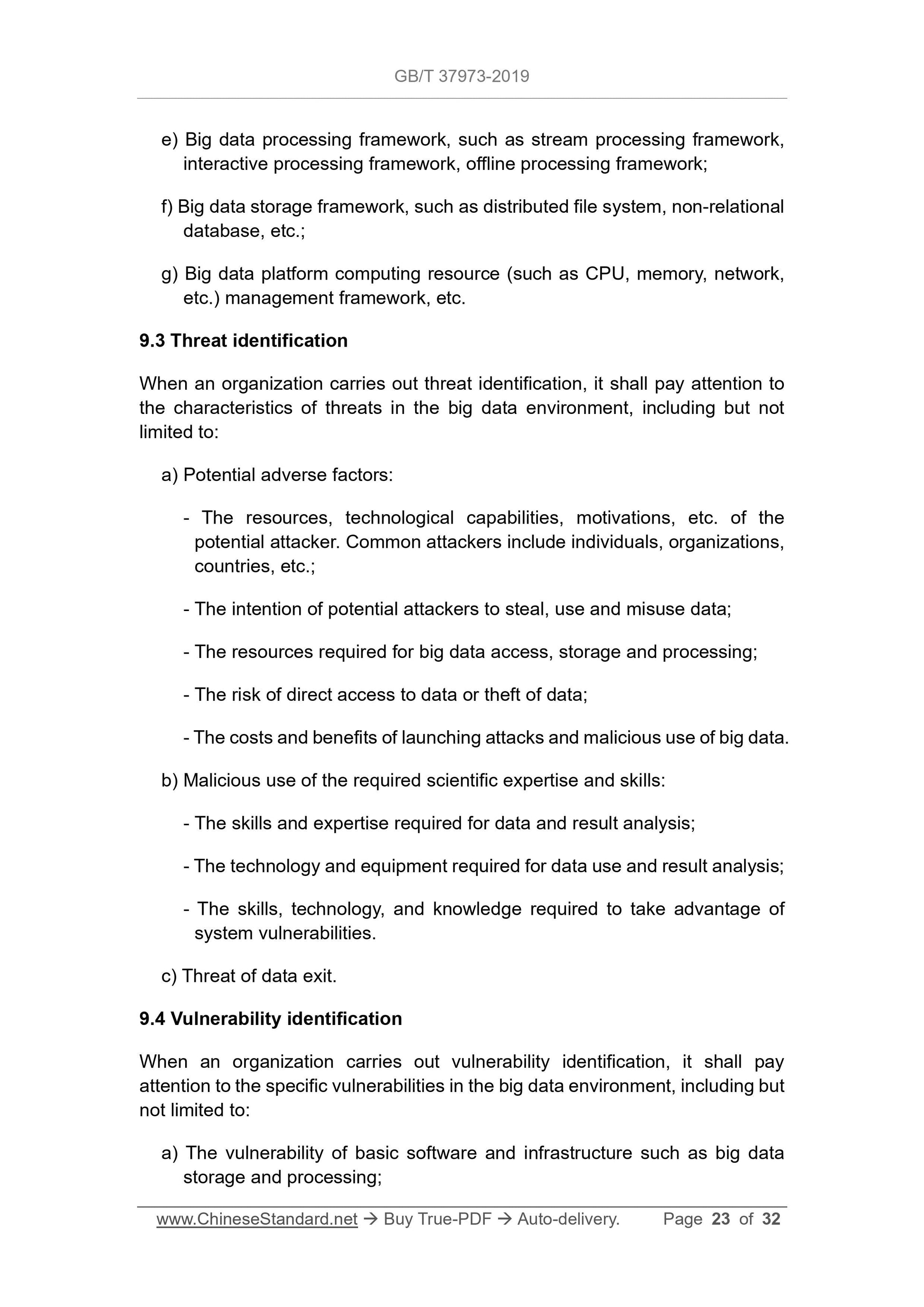1
/
of
12
www.ChineseStandard.us -- Field Test Asia Pte. Ltd.
GB/T 37973-2019 English PDF (GB/T37973-2019)
GB/T 37973-2019 English PDF (GB/T37973-2019)
Regular price
$320.00
Regular price
Sale price
$320.00
Unit price
/
per
Shipping calculated at checkout.
Couldn't load pickup availability
GB/T 37973-2019: Information security technology - Big data security management guide
Delivery: 9 seconds. Download (and Email) true-PDF + Invoice.Get Quotation: Click GB/T 37973-2019 (Self-service in 1-minute)
Newer / historical versions: GB/T 37973-2019
Preview True-PDF
Scope
This Standard puts forward the basic principles of big data securitymanagement; specifies big data security requirements, data classifying and
grading, security requirements for big data activities, and assessment of big
data security risks.
This Standard applies to various organizations for data security management;
can also be used as a reference for third-party assessment agencies.
Basic Data
| Standard ID | GB/T 37973-2019 (GB/T37973-2019) |
| Description (Translated English) | Information security technology - Big data security management guide |
| Sector / Industry | National Standard (Recommended) |
| Classification of Chinese Standard | L80 |
| Classification of International Standard | 35.040 |
| Word Count Estimation | 22,227 |
| Date of Issue | 2019-08-30 |
| Date of Implementation | 2020-03-01 |
| Issuing agency(ies) | State Administration for Market Regulation, China National Standardization Administration |
Share
